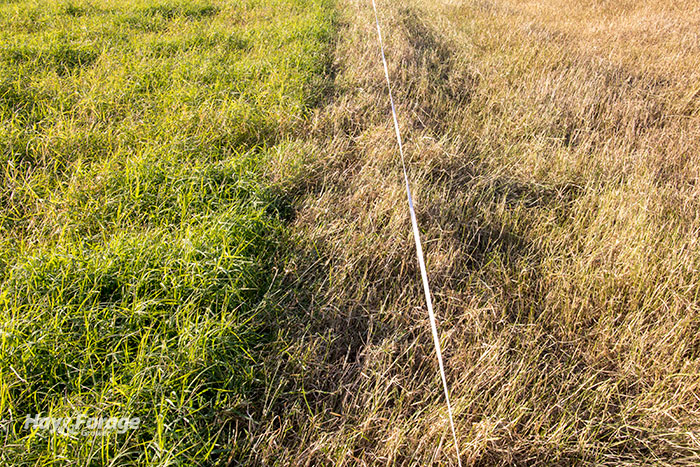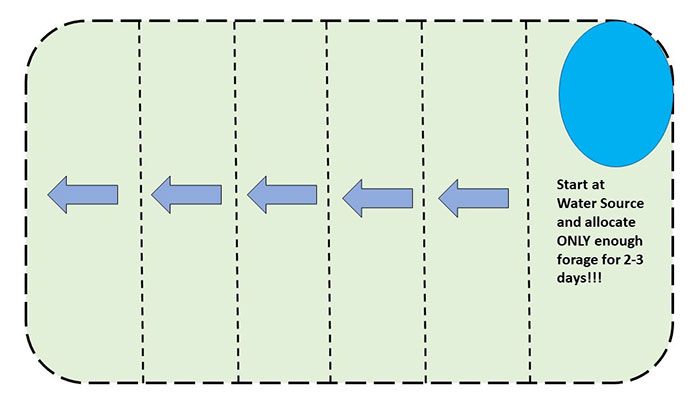
Grazing stockpiled grasses during winter can provide large economic benefits versus feeding hay. In a recent issue of the University of Kentucky’s Off the Hoof newsletter, Chris Teutsch explains how to get the most out of stockpiled grasses, noting that strip grazing pastures can extend grazing by as much as 40% on some farms when cattle are given only enough forage for three days of grazing compared to two weeks.
Like any other time of year, it is important to have a firm understanding of the types of forages in stockpiled pastures. As time passes, some forages can retain quality better than others. Warm-season grasses are among those forages that do not retain forage quality and will need to be grazed first.
The next pastures to utilize are those that contain mostly clover. Most pastures are not comprised of only a single forage species; they are very diverse, usually with one dominant species. Teutsch writes, “We are always happy to see clover in pastures, but it doesn’t hold up well to freezing.” For this reason, graze mixed grass-legume pastures before the purer stands of cool-season grasses.
“Save pastures with primarily tall fescue for later grazing,” Teutsch urges. “Tall fescue is by far the best grass for stockpiling in terms of maintaining its nutritive value as you head into winter.”
Strip graze for best utilization
Teutsch offers the following recommendations to get the most grazing days out of winter stockpiled, strip-grazed pastures:
1. Do what works for you and your farm. Grazing winter stockpiles should be beneficial for the land, forages, and cattle, but also the operator. Choose a schedule that works best for you, whether it be a one-day rotation or once per week. A shorter time period between moves will result in the best utilization and number of grazing days.
2. Start at the water source. When fencing a pasture for strip grazing, start the grazing rotation at the water source; there will be no need for back fencing. This means you should only need a single strand of polywire wire that prevents cattle from advancing into new areas. The forage between the polywire and the water source has already been grazed.

3. Don’t take your forward fence down until the next section’s forward fence is in place. Otherwise, you will be chasing cows.
4. Know that it is a different kind of work. Many farmers are accustomed to the workload that comes with winter hay feedings, so the idea and preparations for strip grazing seem challenging. Teutsch shares that once you are set up for this type of grazing system, the work goes by fast with huge paybacks.
Limiting access to stockpiled forage can significantly improve grazing days per acre, which in turn will reduce the amount of time and other resources needed to get your cattle through the winter months.

C.J. Weddle served as the 2020 Hay & Forage Grower editorial intern. She currently attends Mississippi State University, majoring in agricultural education, leadership, and communications. She grew up on a farm in Vardaman, Miss., where her family raises sweet potatoes and soybeans.

